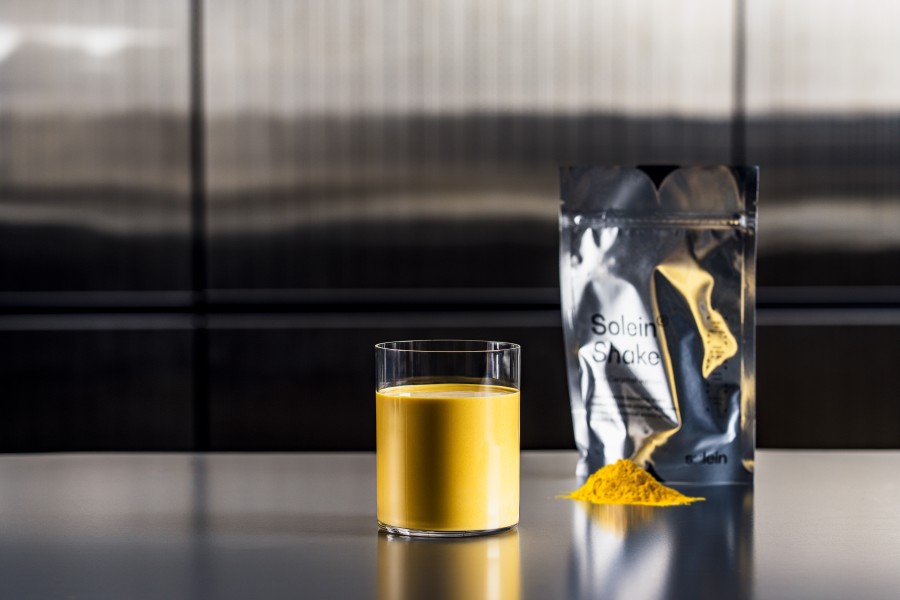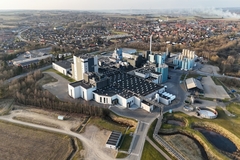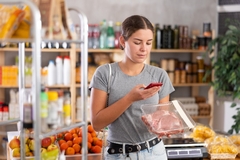
- Industry news
Industry news
- Category news
Category news
- Reports
- Key trends
- Multimedia
- Journal
- Events
- Suppliers
- Home
- Industry news
Industry news
- Category news
Category news
- Reports
- Key trends
- Multimedia
- Events
- Suppliers
Solein in space: Pilot project sends Solar Foods’ next-gen protein into orbit
Key takeaways
- Solar Foods and OHB System are developing a prototype to grow Solein — a protein made from air and electricity — in microgravity through the ESA-funded HOBI-WAN project.
- The pilot aims to prove Solein’s gas-fermentation process can function in space, laying groundwork for sustainable nutrition systems on future Moon and Mars missions.
- Already approved in Singapore, Solar Foods has filed for US FDA GRAS status as it positions Solein as a next-gen sustainable protein for Earth and space applications.

Finnish food-tech company Solar Foods is joining forces with European space-tech firm OHB System in a pilot program to develop gas fermentation technology and grow the edible microbial protein Solein in space.
The project — HOBI-WAN (Hydrogen Oxidizing Bacteria In Weightlessness As a source of Nutrition) — will develop a prototype of the Solein production technology suitable for zero-gravity operations.
Solar Foods wants to explore if Solein grows in space environment similarly as it does on the ground. It will integrate the Solein fermentation technology with the onboard life support systems of future commercial space stations, and future surface habitats like the Moon and Mars.

Growing Solein in a space environment
Initially, the team will develop a ground-based version of the Solein production technology which will provide the scientific results and verify fundamental questions needed to develop the eventual flight model. The next phase will focus on the development of the flight model with the aim of introducing it to the International Space Station (ISS).
“This would be the first time we will be able to verify that our technology works in space. The aim of the project is to confirm that our organism grows in the space environment as it does on the ground, and to develop the fundamentals of gas fermentation technology to be used in space – something that has never been done before in the history of humankind,” says Arttu Luukanen, senior VP Space & Defence at Solar Foods.
“The behavior of gases and liquids in microgravity is vastly different due to lack of buoyancy, which can drastically affect the transport of nutrients and gases for Solein microbes. Gas safety is also of great importance, given that mixtures of hydrogen and oxygen gases are present.”
Solein is made via gas fermentation using air and renewable energy. It is tasteless and integrates into applications easily, and tipped as a future, sustainable protein. It is approved in Singapore and Solar Foods is poised to explore the US, particular in the health and performance segment.
Solar Foods recently submitted a GRAS (Generally Recognized as Safe) notification to the US FDA for a “no questions” letter for the safety assessment of Solein.
With this new collaboration funded by the European Space Agency (ESA) under its Terrae Novae Exploration Programme, Solar Foods says it’s pushing the boundaries of future food.
 Solar Foods has developed several concepts and prototype applications using its protein, including the Solein Shake.
Solar Foods has developed several concepts and prototype applications using its protein, including the Solein Shake.
Providing nutrition on long space missions
The exploration of how food will behave and grow in space is emerging as a key talking point in the F&B industry, with research institutions, academics, and scientists teaming up with ingredient or food firms to investigate the possibilities of feeding people in space.
Providing a sustainable and nutritious food supply which meets the energy requirements of the crew is one of the biggest challenges in human spaceflight, but projects like these aim to overcome such challenges.
“This project aims at developing a key resource which will allow us to improve human spaceflight's autonomy, resilience, and the well-being of our astronauts,” says Angelique Van Ombergen, ESA’s chief exploration scientist.
“For human beings to be able to implement long duration missions on the Moon, or even one day to go to Mars, will require innovative and sustainable solutions to be able to survive with limited supplies. With this project, the ESA is developing a key capability for the future of space exploration.”
Food Ingredients First recently dived into the unique food challenges that deep space exploration poses in an interview with ESA astronaut Rosemary Coogan. Coogan shed light on the sensory and emotional role food plays in microgravity, the challenges of developing nutritious and appetizing food for space missions, and how meals must remain safe, nutritious, and palatable for months without resupply while conserving water and resources in a closed environment.










